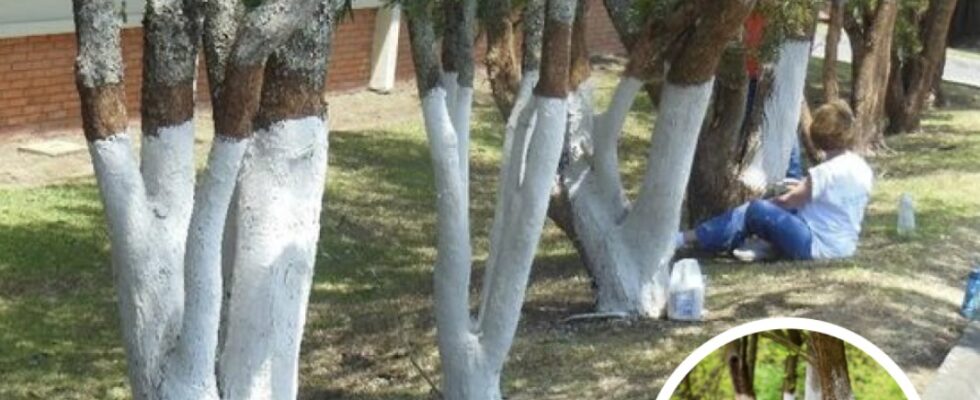As you journey across the endless expanse of the internet, you’re likely to come across a lively and devoted community of plant lovers from every part of the globe.
Among them, the tree planters stand out with unmatched dedication to the noble mission of cultivating trees. Growing a full-sized, fruit-bearing tree from a small sapling isn’t an easy task, and these passionate individuals have discovered clever techniques to protect and nurture their trees. You may have noticed that some trees wear nets or have their trunks painted white—but why?

While orange dots painted on trees typically signal their upcoming removal and purple paint often marks private land boundaries, warning others to stay away, the white paint on the base of tree trunks tells a very different story.
It’s not just for show—this white coating serves a critical function: it helps prevent sunscald, a common issue in winter when sharp temperature shifts between freezing nights and sunny days can cause the bark to crack or split. These splits expose the tree to disease, pests, and long-term damage. By painting the lower part of the trunk white, sunlight is reflected rather than absorbed, keeping the bark from heating too quickly during the day and cooling too fast at night, which reduces the risk of damage.
This protective practice is especially common among fruit trees and young ornamental trees in residential areas and orchards, where the smooth bark is particularly susceptible. The paint used isn’t just any kind—it must be a water-based latex paint, often diluted at a 1:1 ratio with water to avoid suffocating the tree. Some experienced tree caretakers even add joint compound to the mixture to help repel boring insects, adding another layer of protection. When it comes time to apply this white coat, most tree enthusiasts prefer using a paintbrush rather than a sprayer. Brushing ensures a thicker, more even layer that properly protects the bark. Though the job must be repeated yearly, it’s a simple and effective way to help trees endure the harshness of winter. In the end, painting tree trunks white is far more than a cosmetic decision—it’s a thoughtful, strategic act of care and protection. With each brushstroke, tree lovers play a vital role in safeguarding their trees from the elements, ensuring they grow strong and healthy for years to come.
